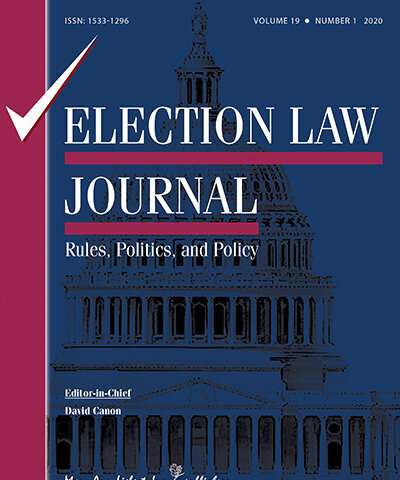Credit: Mary Ann Liebert, Inc., publishers
A new study examined how well American states are using Internet-based platforms to disseminate electoral information and communicate with voters. The study, which focused on website information provided on electoral administrators' websites, use of social media such as Facebook and Twitter, and responsiveness to voters' email communication, is published in Election Law Journal.
The article entitled "Behind the Screens: E-Government in American State Election Administration" was authored by Holly Ann Garnett, Royal Military College of Canada, Kingston.
The study analyzed the content of state election websites based on the activities they are all expected to perform, such as determining who is eligible to vote, conducting polling, and counting and tabulating the votes. The states were shown to perform well in terms of providing information about voter registration and election results. However, they had low rates of information about how to lodge complaints or report security concerns, suggesting poorer accountability and transparency in electoral management.
The study showed that U.S. state election officials have good social media presence, with 82% of states having a Facebook page and 88% of states having a Twitter handle.
Election Law Journal Editor-in-Chief David Canon, University of Wisconsin, states: "In this period of uncertainty caused by COVID-19, the ability for election officials to communicate digitally with voters is increasingly important. With more elections moving online or to mailed ballots, having a better understanding of electronic election administration is of critical importance. This timely article by Holly Ann Garnett should be read by everyone who is concerned with improving access to our elections during a pandemic."
More information: Holly Ann Garnett, Behind the Screens: E-Government in American State Election Administration, Election Law Journal: Rules, Politics, and Policy (2020). DOI: 10.1089/elj.2019.0586
Journal information: Election Law Journal
Provided by Mary Ann Liebert, Inc























